Search
Search Results
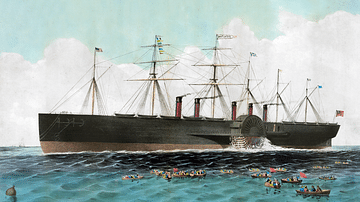
Definition
SS Great Eastern
The SS Great Eastern was a steam-powered ship designed by Isambard Kingdom Brunel (1806-1859) which sailed on its maiden voyage from Liverpool to New York in June 1860. At the time, it was by far the largest passenger ship ever built, a record...

Article
The Bombing of Dresden in 1945
The bomber raid on Dresden was a controversial and highly destructive combined operation by Royal Air Force Lancaster bombers and United States Air Force B-17 Flying Fortress bombers on 13, 14, and 15 February and 2 March 1945. The raid was...

Definition
Mongol Warfare
The Mongols conquered vast swathes of Asia in the 13th and 14th century CE thanks to their fast light cavalry and excellent bowmen, but another significant contribution to their success was the adoption of their enemies' tactics and technology...
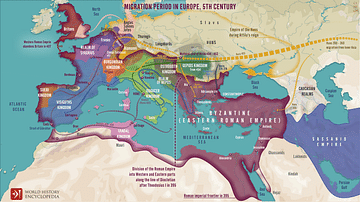
Definition
Migration Age
The Migration Period, also called the Barbarian Invasions or German: Völkerwanderung (wandering of the peoples), was a period of human migration that occurred roughly between 300 to 700 CE in Europe, marking the transition from Late Antiquity...

Definition
Qanat
The qanat (called foggara in North Africa and the Levant, falaj in the United Arab Emirates and Oman, kariz in Iran, and puquios in Peru) is an ancient Middle Eastern irrigation technique in which a long tunnel is dug into arid land that...

Definition
Lepenski Vir
Lepenski Vir (Serbian Cyrillic: Лепенски Вир, “Lepena Whirlpool”) is an ancient settlement on the banks of the Danube in eastern Serbia; more precisely, in Boljetin village, near Donji Milanovac. The site shows evidence of a culture...
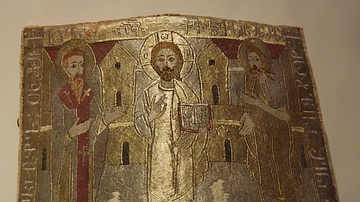
Image
Georgian Liturgical Cuff with Jesus and Saints
This Georgian liturgical cuff dates from 1648 CE and is called "epimanikia" in Greek. It is the liturgical vestments of the Eastern Orthodox Church and Eastern Catholic Churches. They are typically made of flax, silk fabric, gold and silk...
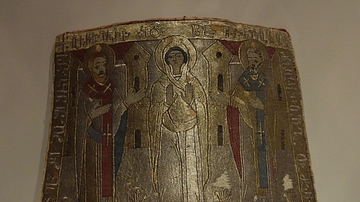
Image
Georgian Liturgical Cuff with Mary and Saints
This Georgian liturgical cuff dates from 1648 CE and is called "epimanikia" in Greek. It is the liturgical vestment of the Eastern Orthodox Church and Eastern Catholic Churches. They are typically made of flax, silk fabric, gold and silk...
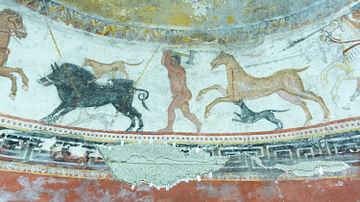
Definition
Thracian Art
The art produced by the people of Thrace, as indicated by the many precious objects found in Thracian tombs dating from the Bronze Age onwards, was, like the culture itself, a mix of indigenous ideas and foreign influences. Although it can...

Definition
Stone Age
From the dawn of our species to the present day, stone-made artefacts are the dominant form of material remains that have survived to today concerning human technology. The term “Stone Age” was coined in the late 19th century...